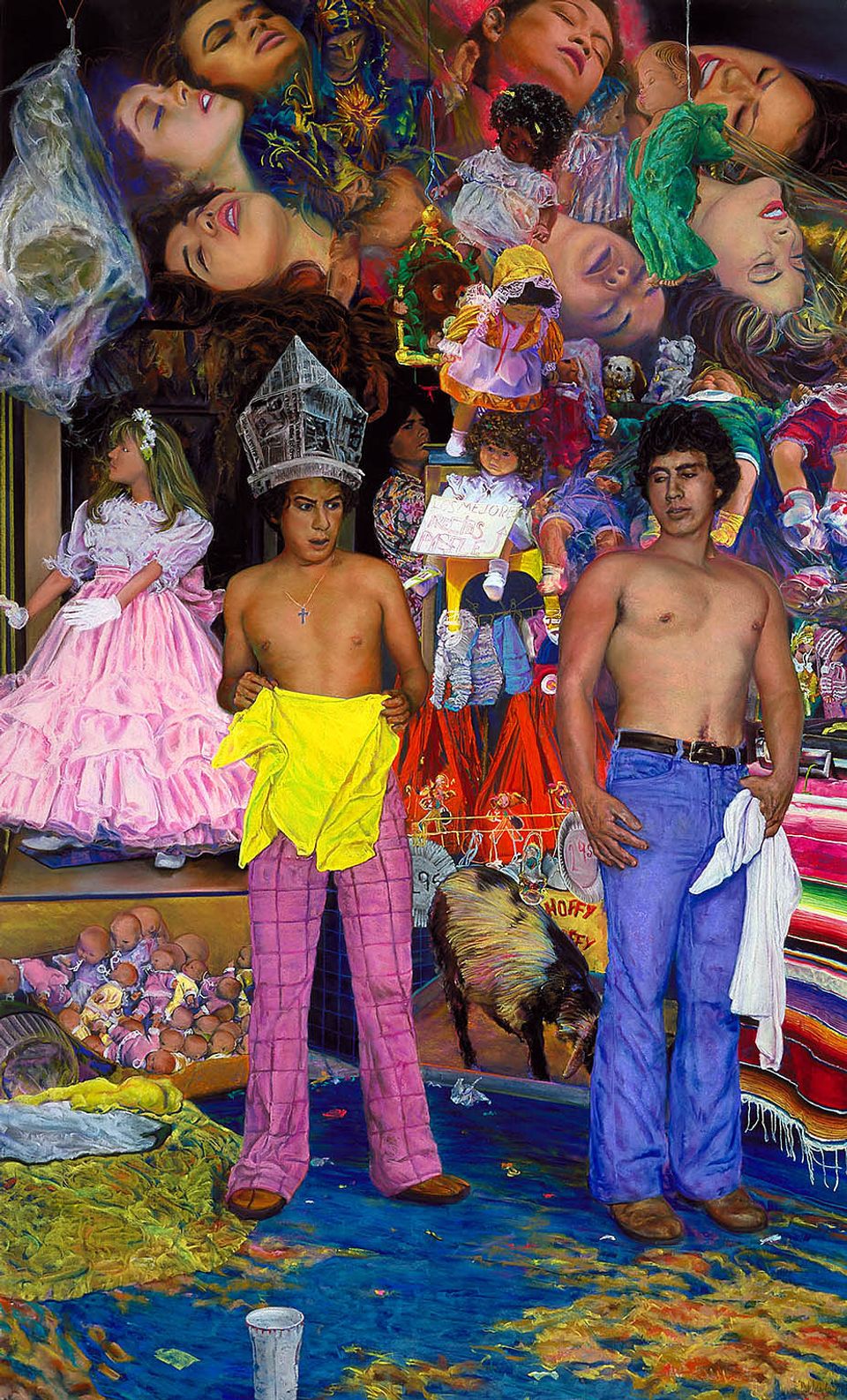
In this blog post Curatorial Assistant Florencia Bazzano-Nelson comments on John Valadez's Two Vendors, an intense and large-scale pastel that will be featured in the upcoming 2013 exhibition Our America: The Latino Presence in American Art. Like other works in the exhibition, this work demonstrates the masterful ways in which Latino artists—many born and/or raised in large cities in California, New York and beyond—have drawn inspiration from America's urban streets.
Several works in the exhibition Our America reveal that Latino artists have consistently explored urban street life. Some of the urban images we have encountered are quite gritty. Scenes of architectural decay, abandoned lots, crowded spaces, cheap merchandize, and sale racks do not sound particularly poetic. However, in the talented hands of Chicano artist John Valadez, store-front retailers spilling their commerce onto the sidewalks of Broadway Avenue in downtown Los Angeles become a stage for captivating human dramas.
Valadez had been familiar with Broadway Avenue since his childhood as it was an important meeting place for the Mexican-American community. This area became a key source of inspiration for his art when he established his studio in downtown Los Angeles in the 1980s. In Broadway, the well-known and monumental mural he produced for the Victor Clothing Company, the painter deploys a cinematic overview of a diverse slice of humanity, including the many people who found their way to this busy avenue: businessmen, gang members, elderly shoppers, folk dancers, movie-goers, and inquisitive children. Such crowded scenes were not uncommon on this street. During weekends whole families arrived together to shop at the many stores and eat at the multi-ethnic restaurants. Visitors sought out Spanish-speaking movies shown at the old movie theaters that once made Broadway Avenue one of the most glamorous destinations in the world. In the late 1980s, newspaper accounts about the efforts to restore Hollywood's golden-age theaters affirmed that without the Latino population these decaying architectural gems found along Broadway would no longer exist.
In Two Vendors, a large pastel from 1989 that will be included in Our America, Valadez captures in photographic detail another fascinating view tying Latinos to Broadway's commercial and cultural ventures. Here two men compete for the attention of female shoppers on a sidewalk. Their street-front shops are so saturated with female apparel and inexpensive dolls that these goods visually overwhelm their displays. Valadez enhances with loving humor the theatrical attitude of the two vendors whose body language and facial expressions indicate a measure of resentment and competition. Both men choose to display not only an inexhaustible amount of merchandize but also their naked torsos as added attractions. The upper section of the pastel functions as a repository of unfulfilled hopes and wishes: a series of female heads with ecstatic expressions rest on the objects for sale, reinforcing the metaphoric links between commercial and manly achievement.
Valadez delights on the baroque density of this image. His hyper-realist approach captures minute details, subtle textural differences, and a wide range of bold colors. Valadez's Two Vendors reveals the artist's insightful understanding of this moment in the life of a Los Angeles street with a very long history.
Our America: The Latino Presence in American Art opens here at American Art October 25, 2013. For more information on other artists in this exhibition, read Preparing for Our America: Music and Abstraction, Works by Freddy Rodríguez and Preparing for Our America: Raphael Montañez-Ortiz Deconstructs the Western. Sign up to receive email updates about this exhibition and other Latino Art programs at the museum.


















